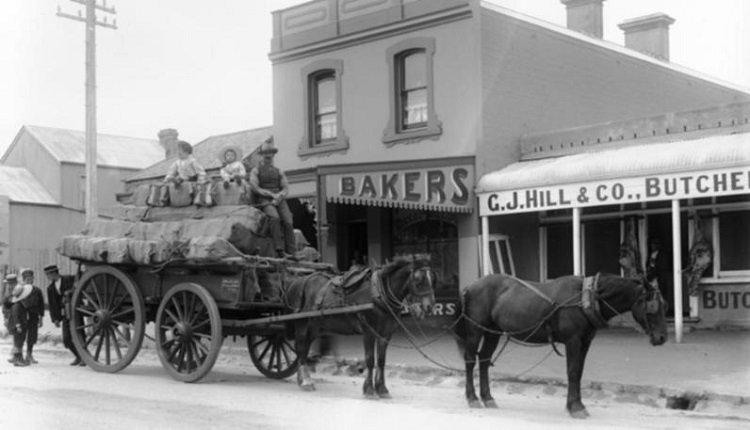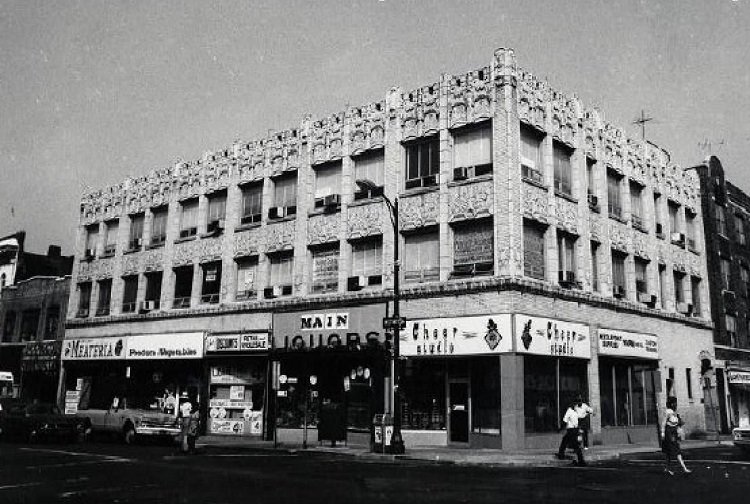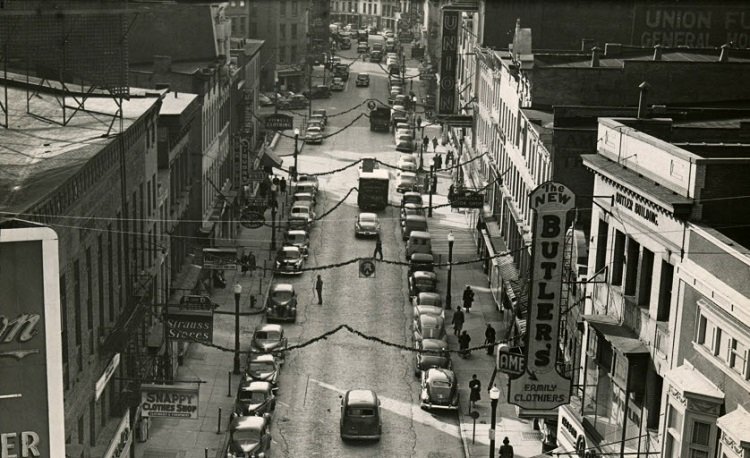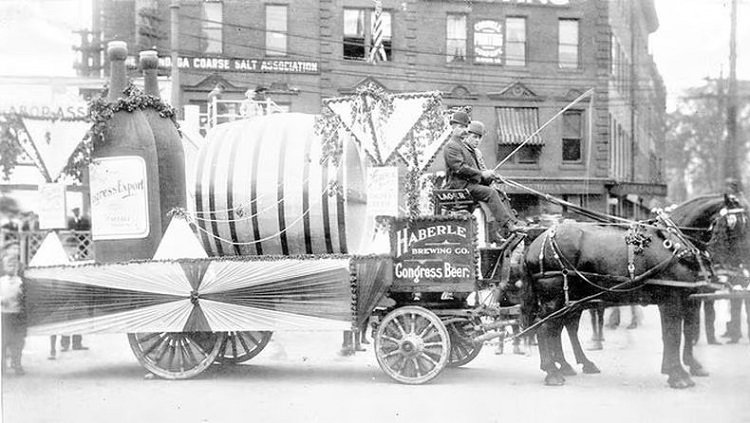New York State has a rich history that spans back centuries. From the Native American tribes who first called the area home to the arrival of European settlers in the 1600s, the state has seen its fair share of changes over the years. Some of the oldest cities in the state have managed to preserve much of this history, with landmarks and buildings that date back to the colonial period. In this article, we will explore the top 10 oldest cities of New York and delve into their unique stories and contributions to the state’s fascinating history.
1. Albany 1614
Albany, the capital of New York, is the oldest continuously inhabited city in the state. It was founded by Dutch settlers in 1614 and was originally called Fort Nassau, after the Prince of Orange-Nassau. The city’s strategic location on the Hudson River made it an important trading hub during the colonial period. In 1664, the British captured the city and renamed it Albany in honor of the Duke of Albany, who later became King James II of England.
Throughout its history, Albany has played a vital role in the state’s political and cultural landscape. During the Revolutionary War, the city served as a key center for the Continental Army and was the site of several important battles, including the Battle of Saratoga, which is widely regarded as the turning point of the war.
You may also like: Top 14 Oldest Cities in Florida

Today, Albany is a thriving city with a rich cultural heritage. Visitors can explore landmarks such as the New York State Capitol Building, which was completed in 1899 and features stunning architecture and artwork. The city is also home to numerous museums and historical sites, including the Albany Institute of History and Art and the New York State Museum.
Overall, Albany remains an important center of commerce and culture in New York, while also serving as a reminder of the state’s long and fascinating history.
2. New York City 1624
New York City, also known as the Big Apple, is the largest and most populous city in the United States. It was founded in 1624 by Dutch traders who established a fur trading post on the southern tip of Manhattan Island. The original settlement, known as New Amsterdam, quickly grew in size and importance, becoming a major center for trade and commerce.
In 1664, the British captured the city from the Dutch and renamed it, New York, in honor of the Duke of York. Throughout the colonial period, New York City continued to grow in both size and influence, attracting people from all over the world with its opportunities for wealth and prosperity.

Today, New York City is a global hub of finance, culture, and innovation. It is home to some of the world’s most iconic landmarks, including the Statue of Liberty, the Empire State Building, and Central Park. The city is also a center for the arts, with world-class museums, theaters, and galleries.
Despite its incredible growth and development over the centuries, New York City has managed to preserve much of its historic charm and character. Visitors can explore neighborhoods like Greenwich Village, which is home to some of the city’s oldest buildings and cultural institutions. The city’s diverse communities and rich cultural heritage are also on display in its numerous festivals, parades, and events throughout the year.
Overall, New York City remains an important symbol of American ingenuity and ambition, while also serving as a testament to the state’s long and storied history.
3. Brooklyn 1634
Brooklyn is the most populous borough of New York City, located on the western end of Long Island. It was founded in 1634 by Dutch settlers, who named it Breukelen after a town in the Netherlands. Initially, Brooklyn was a farming community, but it soon grew into a bustling urban center as more people moved in to take advantage of its proximity to New York City.
Throughout its history, Brooklyn has been a hub of cultural and economic activity. During the Revolutionary War, the Battle of Brooklyn was fought in what is now the borough’s Prospect Park. In the 19th century, Brooklyn became known for its manufacturing industry, with factories producing everything from textiles to sugar. The borough also played a significant role in the abolitionist movement, with prominent figures like Henry Ward Beecher and Harriet Tubman living and working there.
See also: Top 10 Oldest Cities in Texas

Today, Brooklyn is a diverse and vibrant community with a thriving arts and culture scene. The borough is home to world-renowned institutions like the Brooklyn Museum and the Brooklyn Academy of Music, as well as countless smaller galleries, theaters, and performance spaces. Visitors can also explore Brooklyn’s unique neighborhoods, which offer everything from trendy restaurants and bars to historic brownstones and tree-lined streets.
Despite its many changes over the years, Brooklyn has managed to preserve much of its historic charm and character. Visitors can still see remnants of the borough’s agricultural past in places like the Brooklyn Botanic Garden, while also experiencing its cutting-edge contemporary culture in venues like the Barclays Center. All in all, Brooklyn remains an important center of innovation and creativity in New York City and beyond.
4. Yonkers 1646
Yonkers is a city located just north of New York City and is the fourth oldest city in New York State, founded in 1646 by Dutch settlers. The city is named after the Dutchman Adriaen van der Donck, who was known as the Jonkheer, or young nobleman, hence the name “Jonkheer’s land” which was later anglicized to Yonkers.
Yonkers played an important role in the Revolutionary War, serving as a strategic outpost for General George Washington’s troops during the Battle of White Plains. In the 19th century, the city became a popular destination for wealthy New Yorkers seeking a retreat from the hustle and bustle of the city. Many grand estates and mansions were built during this time, some of which still stand today and are open to the public as museums and cultural centers.

Yonkers continued to grow throughout the 20th century, becoming a center for industry and commerce. Today, the city is home to a diverse population of over 200,000 people and boasts a thriving arts and culture scene. Visitors can explore the city’s many museums, galleries, and theaters, as well as its beautiful parks and nature trails.
Despite its many changes over the centuries, Yonkers has managed to preserve much of its historic charm and character. The city’s downtown area is home to numerous historic buildings, including the iconic Yonkers City Hall and the Philipse Manor Hall State Historic Site, which dates back to the colonial period.
5. Kingston 1652
Kingston is a historic city located in Ulster County, New York, and is the fifth oldest city in the state, founded in 1652 by Dutch settlers. The city is situated at the mouth of the Rondout Creek, where it meets the Hudson River, and served as an important center of commerce and industry throughout its history.
In the 18th century, Kingston played a pivotal role in the American Revolution, serving as the first capital of New York State. The city was also home to many of the region’s most prominent families, including the DeWitt and Van Gaasbeek families, who built grand estates and mansions that still stand today.

In the 19th century, Kingston became a center for industry, with factories producing everything from paper to bricks. The city also played an important role in the development of transportation infrastructure, with the construction of the Delaware and Hudson Canal and the Ulster and Delaware Railroad.
Today, Kingston is a vibrant and thriving city with a rich cultural heritage. Visitors can explore the city’s many museums and galleries, including the Hudson River Maritime Museum and the Kingston Museum of Contemporary Art. The city is also home to numerous restaurants, cafes, and boutiques, as well as beautiful parks and nature trails.
Despite its many changes over the centuries, Kingston has managed to preserve much of its historic charm and character. Visitors can still see many of the city’s historic buildings and landmarks, including the Senate House State Historic Site, which served as the first capital of New York State.
6. Schenectady 1661
Schenectady is a city located in Schenectady County, New York, and is the sixth oldest city in the state, founded in 1661 by Dutch settlers. The city is situated along the Mohawk River and has a rich history as a center of industry and innovation.
In the 19th century, Schenectady played an important role in the development of the American railroad industry, serving as the headquarters of the New York Central Railroad. The city was also home to many major industrial firms, including General Electric and American Locomotive Company, which helped to establish Schenectady as a center of technological innovation.
You may also like: Top 15 Oldest Cities in California

Today, Schenectady is a vibrant and diverse community, with a thriving arts and culture scene. Visitors can explore the city’s many museums and galleries, including the miSci Museum and the Proctors Theatre, a historic venue that hosts a variety of performances and events.
Despite its many changes over the centuries, Schenectady has managed to preserve much of its historic charm and character. Visitors can still see many of the city’s historic buildings and landmarks, including the Stockade Historic District, a neighborhood of well-preserved colonial homes and buildings.
Overall, Schenectady remains an important center of industry and innovation in New York State, while also serving as a testament to the state’s long and fascinating history.
7. New Rochelle 1688
New Rochelle is a historic city located in Westchester County, New York, and is the seventh oldest city in the state, founded in 1688 by French Huguenot settlers. The city is situated on Long Island Sound and has a rich history as a center of commerce, industry, and culture.
In the 19th century, New Rochelle became a popular destination for wealthy New Yorkers seeking a retreat from the city. Many grand estates and mansions were built during this time, some of which still stand today and are open to the public as museums and cultural centers.

Today, New Rochelle is a thriving community with a diverse population and a rich cultural heritage. The city is home to a number of historic landmarks and attractions, including the Thomas Paine National Historical Association, which commemorates the life and legacy of the revolutionary writer and thinker.
Visitors to New Rochelle can also enjoy the city’s many parks and beaches, as well as its vibrant downtown area, which is home to numerous restaurants, cafes, and shops. The city is also known for its thriving arts and culture scene, with a variety of galleries, theaters, and music venues.
Despite its many changes over the centuries, New Rochelle has managed to preserve much of its historic charm and character. Visitors can still see many of the city’s historic buildings and landmarks, including the Huguenot Street Historic District, which features well-preserved colonial-era homes and buildings.
8. Troy 1787
Troy is a historic city located in Rensselaer County, New York, and is the eighth oldest city in the state, founded in 1787. The city is situated on the east bank of the Hudson River and has a rich history as a center of industry and innovation.
In the 19th century, Troy became known as the “Collar City” due to its thriving collar manufacturing industry. The city was also home to a number of other major industries, including ironworks, textile mills, and breweries.
See also: Top 10 oldest cities of Georgia

Today, Troy is a vibrant and diverse community with a thriving arts and culture scene. Visitors can explore the city’s many museums and galleries, including the Troy Savings Bank Music Hall and the Rensselaer County Historical Society Museum.
Despite its many changes over the centuries, Troy has managed to preserve much of its historic charm and character. Visitors can still see many of the city’s historic buildings and landmarks, including the Troy Waterfront Farmers Market, which is housed in a restored 19th-century warehouse.
9. Buffalo 1789
Buffalo is a historic city located in western New York and is the ninth oldest city in the state, founded in 1789. The city is situated on the eastern shore of Lake Erie and has a rich history as a center of industry, commerce, and culture.
In the 19th century, Buffalo played a crucial role in the development of the American railroad and shipping industries, thanks to its location along the Great Lakes and the Erie Canal. The city was also home to a number of major industries, including steel manufacturing, grain milling, and automobile production.

Today, Buffalo is a vibrant and cosmopolitan city with a diverse population and a thriving arts and culture scene. Visitors can explore the city’s many museums and galleries, including the Albright-Knox Art Gallery and the Buffalo Museum of Science.
Despite its many changes over the centuries, Buffalo has managed to preserve much of its historic charm and character. Visitors can still see many of the city’s historic buildings and landmarks, including the Richardson Olmsted Campus, a former psychiatric hospital that has been converted into a mixed-use development featuring shops, restaurants, and a hotel.
10. Syracuse 1820
Syracuse is a historic city located in central New York and is the tenth oldest city in the state, founded in 1820. The city is situated on the eastern shore of Onondaga Lake and has a rich history as a center of industry, education, and culture.
In the 19th century, Syracuse played a crucial role in the development of the American salt industry, thanks to its location near a vast salt deposit. The city was also home to a number of major industries, including manufacturing, agriculture, and education.
See also: 15 oldest Cities & Towns in Ohio

Today, Syracuse is a vibrant and diverse community with a thriving arts and culture scene. Visitors can explore the city’s many museums and galleries, including the Everson Museum of Art and the Museum of Science and Technology.
Despite its many changes over the centuries, Syracuse has managed to preserve much of its historic charm and character. Visitors can still see many of the city’s historic buildings and landmarks, including the Erie Canal Museum and the Syracuse University campus.
Conclusion
The Top 10 oldest cities in New York have a rich and diverse history that reflects the state’s long and fascinating past. From Albany, the state capital and oldest city, to Syracuse, the 10th oldest city founded in 1820, each of these cities has played an important role in shaping the state’s economy, culture, and society. Despite the many changes over the centuries, these cities have managed to preserve much of their historic charm and character, offering visitors a glimpse into New York’s past while also serving as important centers of industry, education, and culture in the present day. Whether you are interested in history, arts, or culture, the Top 10 oldest cities in New York have something for everyone to enjoy.
 Skip to content
Skip to content
